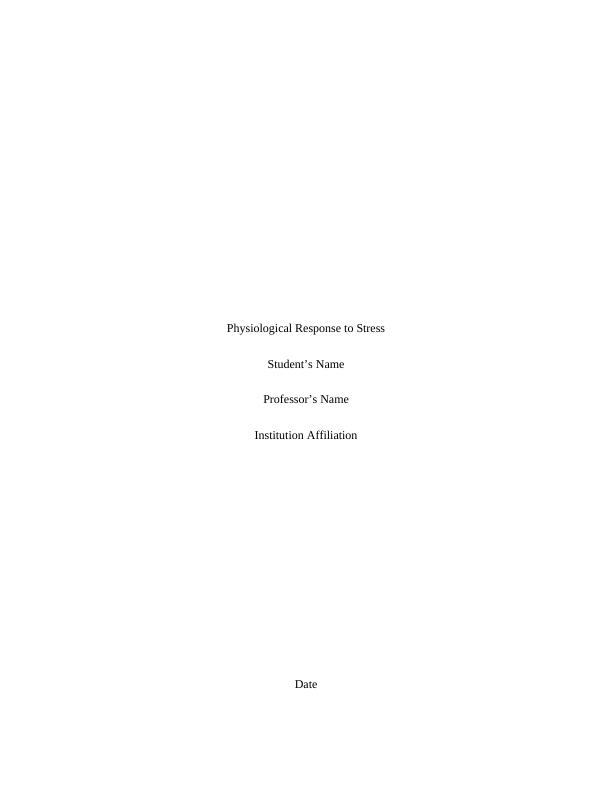Physiological Response to Stress
Determine the regulation of blood pressure during physiological challenges by measuring heart rate, systolic and diastolic blood pressure, and mean arterial pressure in different conditions such as supine, standing, cold pressor test, and handgrip exercise.
Added on 2023-05-29
About This Document
This report investigates the cardiovascular reactions due to stress, including systolic and diastolic blood pressure and heart rate. It discusses the physiological systems involved in the stress response, including the nervous, endocrine, immune, and limbic systems.
Physiological Response to Stress
Determine the regulation of blood pressure during physiological challenges by measuring heart rate, systolic and diastolic blood pressure, and mean arterial pressure in different conditions such as supine, standing, cold pressor test, and handgrip exercise.
Added on 2023-05-29
End of preview
Want to access all the pages? Upload your documents or become a member.


